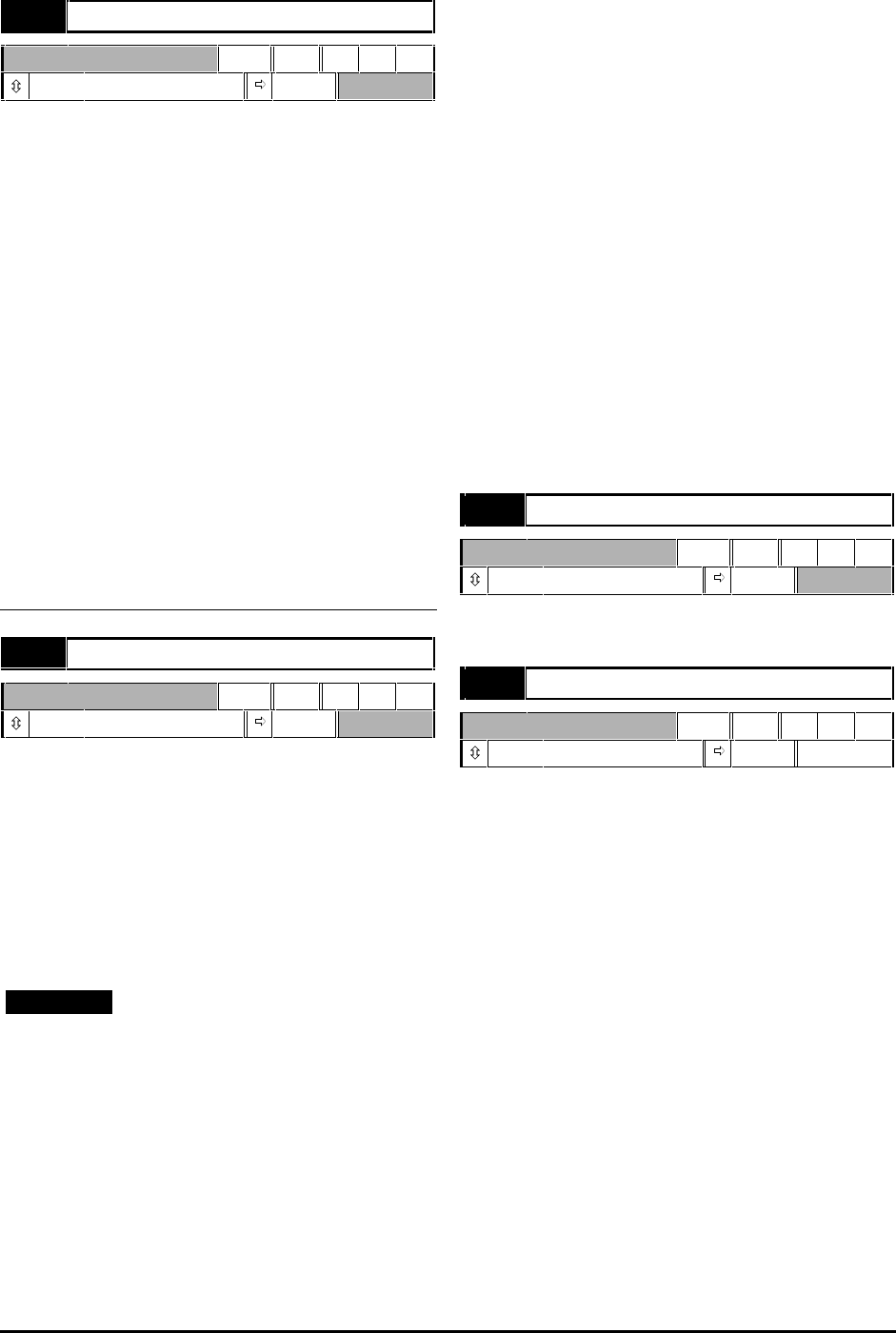
Commander GP User Guide
Issue code: gpxu2
D-6 Menu 0 Parameters
0.38 Initial parameter displayed
RW Uni P
0.00 ~ 0.50 0.10
At the time the AC supply is connected to the Drive,
parameter 0.10 Estimated motor speed is
automatically pre-selected as the initial parameter
to be displayed. This results in the following:
1. After the
AC supply is connected to the Drive,
and before any other parameter is selected, the
value of parameter 0.10 is shown on the upper
display. This allows the motor speed to be
monitored without the need to select the
parameter.
2. If the keypad is subsequently used to select
another parameter, the value of the newly
selected parameter is displayed in place of the
initial parameter.
To select a different parameter to be displayed initially,
enter the required parameter number in 0.38 (eg. to
display 0.12 Post-ramp reference, enter 0.12).
Spinning motor,
Autotune,
PWM switching frequency
0.39 Synchronize to a spinning motor
RW Bit
0 ~ 1 0
Set 0.39 at 1 for the Drive always to automatically
synchronize itself to the motor if the motor is
already rotating when the Drive is started.
If the Drive is started when the motor is already
spinning and 0.39 is set at 0, the Drive cannot
detect the speed of the motor; the normal
operation of the Drive will cause the motor to be
braked to a stand-still in the same way as
DC injection braking. The Drive will then accelerate
the motor to the value of the frequency reference.
Notes
The Drive can be synchronized to a single
motor only. If more than one motor is
connected to the Drive, this function should
not be used.
For the Drive to operate correctly during
and after synchronization, parameter
0.07 Voltage mode selector must be set at Fd.
The Drive starts a sequence of operations at one
quarter of the rated motor voltage in order to
detect the frequency associated with the speed of
the motor. The sequence is stopped when the
motor frequency is detected. The stages in the
sequence are as follows:
1. The frequency of the Drive is set at maximum
(the value of 0.02) in the direction that the
motor was last driven. (If the
AC supply to the
Drive was interrupted before an attempt is
made to synchronize to a spinning motor, the
Drive always starts in the forward direction.)
2. The frequency is reduced to zero. If the motor
frequency is detected during the reduction in
Drive frequency, the test is stopped. The Drive
frequency is set at the detected motor
frequency and the Drive takes control of the
motor.
3. If the motor frequency is not detected, the
Drive is set at maximum frequency in the
opposite direction, and the test is repeated.
4. If the motor frequency is still not detected, the
Drive frequency is set at 0Hz, and the Drive
takes control of the motor.
0.40 Autotune
RW Bit P
0 ~ 1 0
Set 0.40 at 1 to start the Autotune sequence. See
Autotune in Chapter 2 Getting Started.
0.41 PWM switching frequency
RW Txt P
3, 4.5, 6, 9, 12 3 kHz
See PWM switching frequency in Planning the installation in
Chapter 2 Installing the Drive in the Installation Guide.
Thermal protection
Intelligent thermal modelling in the Drive effectively
monitors the junction temperature of the IGBTs in
the power stage. When the junction temperature is
calculated to reach the maximum permissible value,
two levels of protection occur, as follows:
1. When a
PWM switching frequency of 6kHz, 9kHz
or 12kHz is selected, the
PWM switching
frequency is automatically halved. This reduces
switching losses in the IGBTs. (The value of
parameter 0.41
PWM switching frequency remains
at the value set by the user.)
Then at one-second intervals, the Drive will
attempt to return the
PWM switching frequency
to the original value. This will be successful
when the thermal modelling has calculated that
the temperature has reduced sufficiently.
